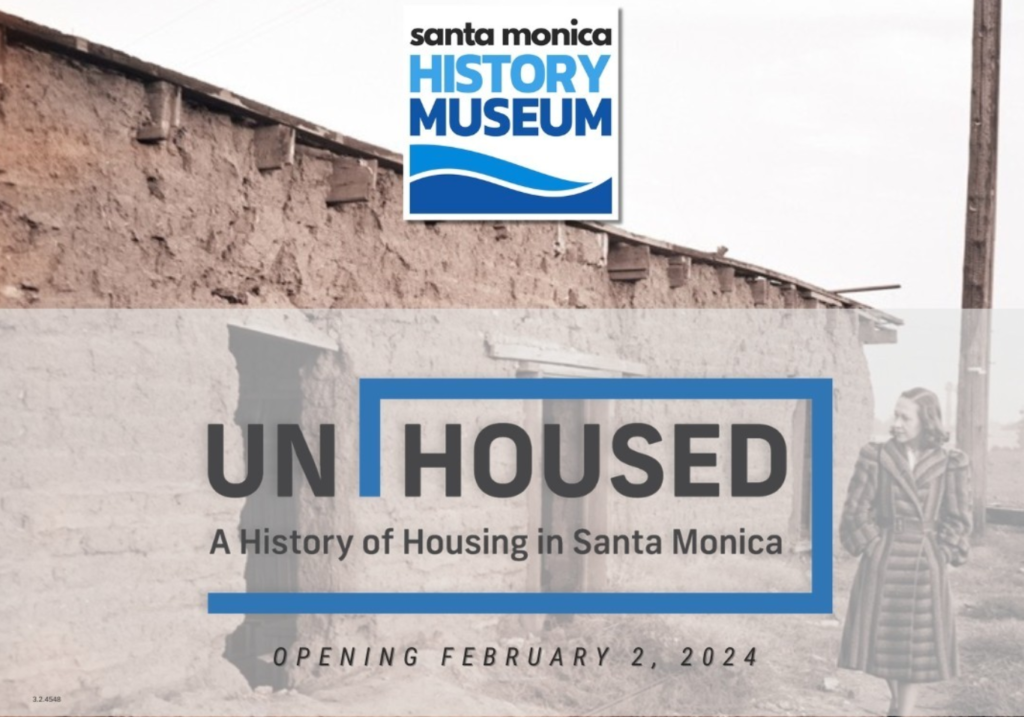Unhoused: A History of Housing in Santa Monica is an interactive art exhibit that opens this Friday and runs through the end of the year. According to the museum’s website, the exhibit “emphasizes that, “emphasizes that housing is not merely a structure but a reflection of community, inclusivity, and shared heritage.” It includes both historic photographs and an “interactive planning model” presented by James Rojas.
Rojas has traveled the world with his interactive modeling project where he provides common household items, ranging from toys to cleaning supplies, and encourages people to use them to plan for their ideal urban design. I’ve taken place in Rojas’ interactive model at schools where teenagers designed their ideal street, my church where we created fantasy plans for the property where SMO now stands, and I’ve even seen designs for entire cities.
Rojas’ base map for this project consists of 24 full city blocks and 13 half blocks. Each block is divided into 14 lots (1” x 2”). Rojas’ original design for the map includes different types of housing in the lots and he promises a chance to make “radical changes” to Santa Monica’s grid in this fantasy map.

“From the Tongva people to its contemporary beach town metropolis, the exhibition delves into the heart of Santa Monica’s housing legacy. I built an interactive model for patrons to physically explore and imagine the various housing typologies,” Rojas writes in a statement to Next. “Come reimagine what 438 city lots with dingbats, single family homes, apartments, courts and ADU’s can look and feel like.”
The Santa Monica History Museum, is located at 1350 7th Street, Santa Monica, CA 90401. It opens on Thursdays from 2-5 p.m. and weekends from 11 a.m. to 5 p.m.
“Housing is perhaps the preeminent issue in our region and across all of California. It is critical to understand where we’ve been and how we got here,” writes Rob Schwenker, Executive Director of the Santa Monica History Museum.
